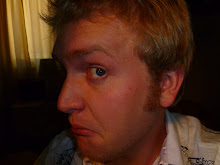Walter Benjamin, “The Work of Art in the Age of Mechanical Reproduction” (1936)
…For the first time in world history, mechanical reproduction emancipates the work of art from its parasitical dependence on ritual. To an ever greater degree the work of art reproduced becomes the work of art designed for reproducibility. From a photographic negative, for example, one can make any number of prints; to ask for the "authentic" print makes no sense. But the instant the criterion of authenticity ceases to be applicable to artistic production, the total function of art is reversed. Instead of being based on ritual, it begins to be based on another practice--politics.
To a degree, I agree with Benjamin's thoughts on art and reproducibility in the "machine age," and even more so now that we are in the full swing of the digital age. Photographs are incredibly reproducible, and digital prints even more so. We read this article for my world music class, and the concept relates in a nearly 1-1 kind of way - recordings of music are easy to come by. The little hand recorder I bought for $100 produces beautiful 96/24 stereo recordings. Fidelity in photography and sound recording goes up and up as prices plummet - I remember looking at a digital camera add from the 90s showcasing a brand new state-of-the-art Hasselblad digital back that cost the same as a car, and now an iPhone comes with a better camera. For the vast majority of consumed artistic media, "authenticity" is a rather silly concept.
I think, though, that Benjamin overshot his vision. The pictures I included above are from artists who were at the artistic forefront at the time Benjamin was writing, Ansel Adams and Edward Weston. I have quite a bit of experience (for a 23 year-old) in fine art photography, and I have used the same processes Ansel and Edward used to make photographs, right down to the selenium toning. I know for absolute fact that there are aspects of photography at this level that are not reproducible, at least not any more than an original oil painting is exactly reproducible. The exact exposure times may be recorded, the precise concentrations of chemical might be marked, and the time in the bath might be timed down to the second, but there are still parts that come down to artistic decisions, backgrounded by experience, made on the fly. Things change from day to day, and every piece of fiber paper you use has its own slightly unique characteristics, even if they all came from the same pack. There are also techniques that are simply too difficult for amateur photographers to pull off without years of experience, and the stepwise process of photography involves decisions as to which techniques to use in each of the three major stages (producing the negative, processing the film, and printing the image). The final result in fine art photography is a print as unique as any painting. Even high quality digital scans fail to capture the vibrancy and beauty of the originals - look at high quality digital reproductions, and then go take a close look at an original. There is an almost spiritual presence. I spent years looking at Ansel Adams photographs online and in coffee-table books, and then I went and saw the real things. It's like listening to vinyl on a high-fi system versus listening to the same track on an iPod with Skullcandy headphones, though maybe less extreme. There is a reason original oil paintings and silver gelatin or platinum photographs sell for so much at Sotheby's, and there is a reason people still go to concerts. I argue that there is still value in the "authentic," and that is a substantial reason I and others go places to do fieldwork as opposed to just listening to recordings, watching YouTube videos, and looking at pictures. I will be reproducing material for people to look at and listen to, and I am extremely grateful for the recording devices of the digital age, but I know I will have most of the most moving and meaningful musical experiences in person, with the sounds coming straight from their source to my ears without any middle-men or processing. There is power in the ritual of performance, whether that performance is musical, visual, or otherwise. That power will be reproducible only in part, as if through a glass darkly, through descriptions and recordings.





No comments:
Post a Comment